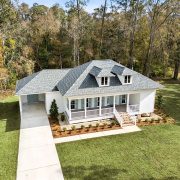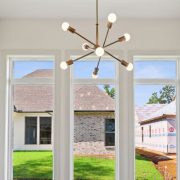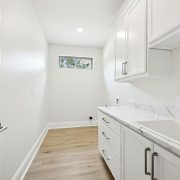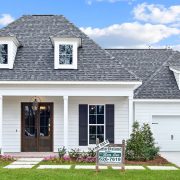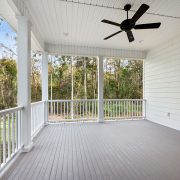Building your dream home or transforming a fixer-upper is an exciting journey — but it comes with financial complexities. For homebuyers who might not qualify for conventional construction loans or who want to take advantage of more flexible credit requirements, FHA construction loans can offer an appealing path forward.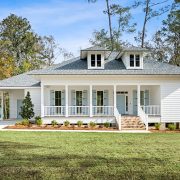
Backed by the Federal Housing Administration (FHA), these loans are designed for individuals looking to either build a new home from the ground up or rehabilitate an existing property. Whether you’re constructing a home on raw land or turning a neglected house into something beautiful, here’s everything you need to know about FHA construction loans in 2025.
What Is an FHA Construction Loan?
An FHA construction loan is a government-insured form of financing that provides the funds needed to pay for a home’s construction or major renovation. The loan covers costs such as the land, labor, materials, permits, and fees. Depending on the type, this loan may convert into a permanent mortgage once the work is complete — meaning you only go through one closing and save on fees.
These loans stand out because they offer low down payment options — as little as 3.5% for borrowers with credit scores of 580 or higher — and are generally more accessible for buyers with moderate incomes or less-than-perfect credit.
How Do FHA Construction Loans Work?
Unlike a standard mortgage, a construction loan is short-term. Funds are disbursed in stages as the construction progresses and inspections are passed. These “draws” go directly to the builder or contractor rather than the borrower.
Once construction is complete, the loan typically converts into a permanent FHA mortgage (in the case of construction-to-permanent loans), or the borrower can apply for a new mortgage to pay off the construction loan.
Types of FHA Construction Loans
1. FHA Construction-to-Permanent Loan (Single-Close Loan):
This one-time close loan covers both the cost of building the home and your permanent mortgage. You’ll finance land, construction, and then roll the balance into a standard FHA loan without needing a second closing.
2. FHA 203(k) Rehabilitation Loan:
This option is ideal for purchasing a home that needs significant renovations. The 203(k) loan includes both the purchase price and the cost of repairs or remodeling in one package. There are two types:
Standard 203(k): For major renovations over $75,000.
Limited 203(k): For minor improvements under $75,000.
FHA Construction Loan Requirements
To qualify, borrowers must meet both standard FHA loan requirements and additional construction-specific guidelines:
- Credit Score: 580+ for 3.5% down, 500–579 with at least 10% down.
- Debt-to-Income Ratio (DTI): Generally 43% or lower, though exceptions may be made.
- Down Payment: Minimum 3.5% for most borrowers.
- Loan Limits: Must fall within FHA limits based on location and loan type.
- Occupancy: Property must be a primary residence.
- Mortgage Insurance: Both upfront and annual premiums are required.
- Project Documentation: Includes detailed construction plans, cost breakdowns, and contractor credentials.
- 203(k) Consultant: Required for standard 203(k) loans to estimate renovation costs and oversee progress.
How to Apply for an FHA Construction Loan
1. Prepare Financially
Strengthen your credit score if possible, save for a higher down payment to reduce your loan costs, and budget for potential construction overruns.
2. Choose Your Team
Find a reputable contractor and a real estate agent who can help you identify the right property or lot. For renovation projects, also secure a HUD-approved 203(k) consultant.
3. Get Preapproved
Connect with FHA-approved lenders — not all offer construction loans, so be sure to ask upfront. Shop around, compare rates and terms, and aim to get preapproved by at least three lenders.
4. Submit Your Plans
You’ll need to provide construction specs, contractor details, and a budget before your loan can be processed and approved.
5. Close and Start Building
Once approved, your lender will schedule draw inspections and release funds as the project progresses. After completion, your loan transitions to a regular FHA mortgage (if applicable).
Alternatives to FHA Construction Loans
While FHA construction loans work well for many, they’re not the only option:
- Conventional Construction Loans: Require higher credit and down payments but don’t come with lifelong mortgage insurance.
- VA Construction Loans: For eligible veterans, offering 0% down and no PMI.
- USDA Construction Loans: For low-to-moderate income borrowers building in rural areas.
- HomeStyle Renovation Loans: A conventional alternative to 203(k) loans, financing up to 75% of the post-renovation value.
- HELOC or Home Equity Loan: If you already own a property with equity, these options can finance improvements without a full refinance.
- Cash-Out Refinance: Replace your current mortgage with a new, larger one and use the difference for renovations.
Is an FHA Construction Loan Right for You?
If you’re dreaming of building your ideal home but worry that conventional loans are out of reach, an FHA construction loan may be the right fit. With low down payment requirements and flexible credit standards, these loans make it possible for more Americans to create or transform their forever home.
Just be sure to work with experienced professionals and lenders who understand the nuances of construction lending — and go into the process with a realistic timeline, solid financial cushion, and plenty of patience. After all, building or restoring a home may not be simple — but with the right financing, it’s within reach.
Click Here For the Source of the Information.

